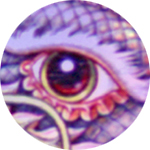Unusual flat-pack daruma voted Japan’s most fascinating souvenir
Oona McGee 11 hours ago

If you’re looking for a unique Japanese gift that’s light in your luggage but heavy in tradition, then this is the item for you. It’s called the KD Daruma (Knock-Down Daruma) and it’s modelled on the centuries-old, round, good-luck talisman which symbolises Bodhidharma, the founder of the Zen sect of Buddhism. This modern take on the daruma features a flat-pack design and clever assembly so unusual it’s just been awarded first prize as Japan’s most fascinating souvenir in a competition held by the Japan Tourism Agency. We take a closer look at the details to see what makes this little novelty so charming.

Three local companies in Takasaki City, Gunma Prefecture, worked together to form “occS”, which released the product in July last year. Takasaki is renowned throughout Japan as the largest producer of daruma dolls, which are traditionally made from paper mâché and then painted a vivid shade of red. The city is even home to the famous Shōrinzan, otherwise known as the ”daruma temple,” where it’s claimed the first dolls originated in the late 17th Century.

The KD Daruma comes in two versions: plywood or cardboard. The plywood model, at 3,990 yen (US$38.84) is sturdier and lighter in colour than the cardboard version, priced at 1,890 yen (US$18.40). Both versions are assembled with flat pieces created by a laser cutter.

In keeping with the country’s efforts to promote “cool Japan” to the world, the packaging is simple and modern, with details and instructions printed in both Japanese and English.

The design even allows you to use the doll as it’s traditionally intended: by giving it one black eye with paint or a marker as you wish for success at the beginning of a venture. Once the goal has been realised, the other eye can be painted on. Cardboard makes a great surface on which to draw eyes!

On sale online through Amazon Japan, this piece of industrial art manages to exude a zen-like tranquility with its negative space and simplicity. It’s a surprisingly perfect blend of modern and traditional Japan in one easy-to-handle package!



 Reply With Quote
Reply With Quote








